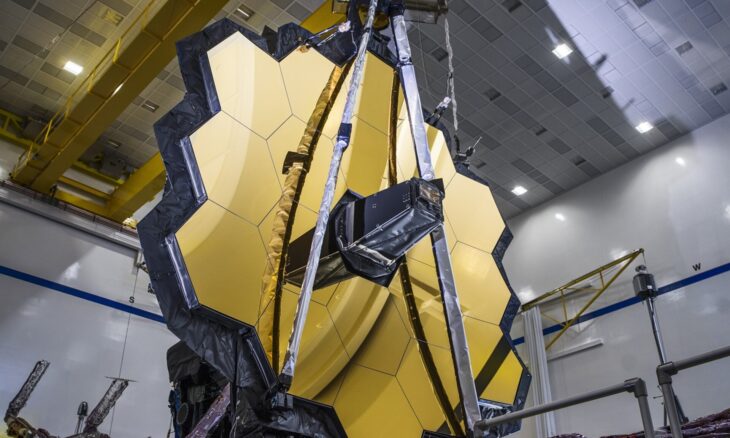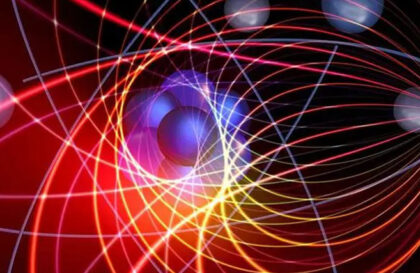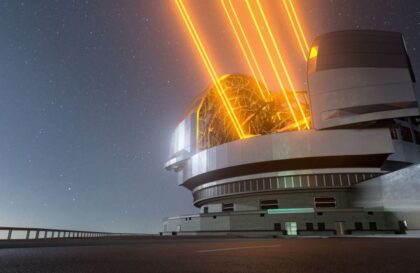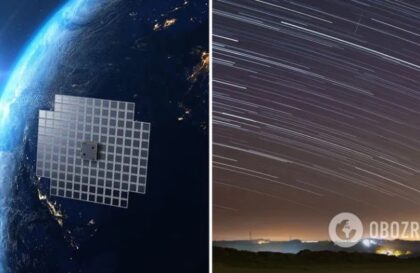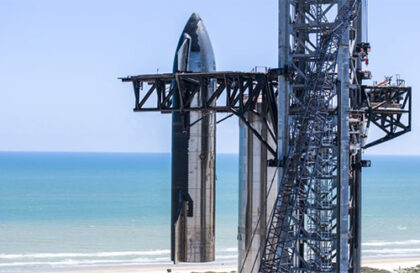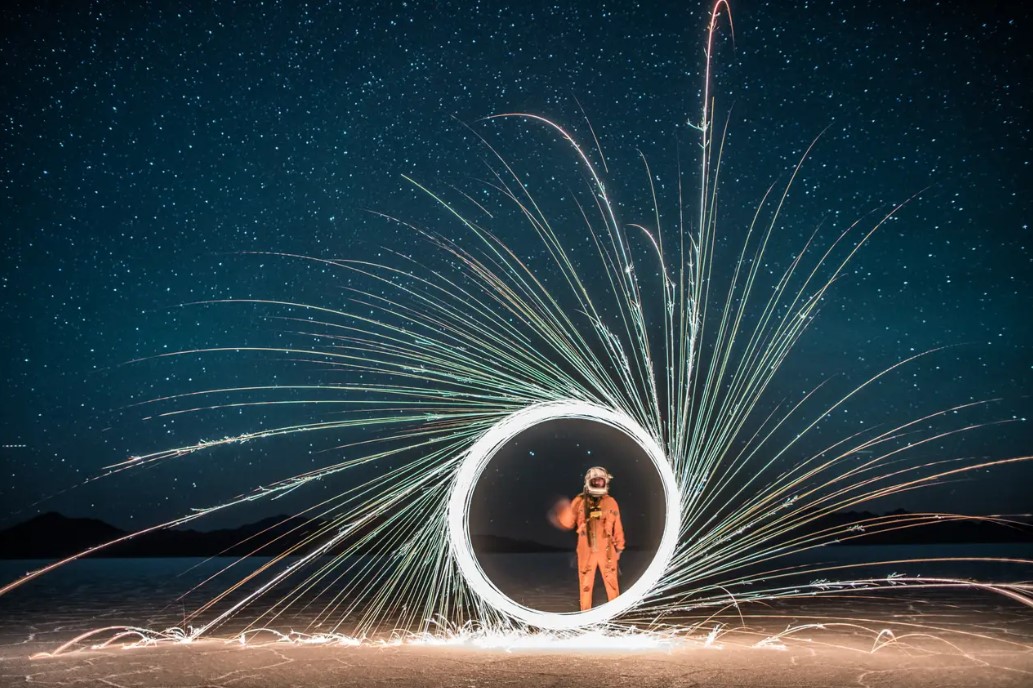Main mirror
The main and most innovative component of the James Webb telescope is its main mirror with a diameter of 6.5 meters. Instead of creating a larger version of the mirror, as in the case of Hubble, the scientists opted for an elegant solution: they assembled a mirror from 18 individual segments made of a light and durable metal – beryllium, coated with a thin layer of gold. As a result, the weight of this mirror is 705 kilograms, while its area is 25 square meters. In comparison, the Hubble mirror has a weight of 828 kilograms and an area of 4.5 square meters.
Heat shield
A deployable heat shield is needed to protect the James Webb instruments from overheating in Earth orbit, where temperatures can reach 121 degrees Celsius when exposed to sunlight. This screen has dimensions comparable to a tennis court (21 x 14 meters), which makes it impossible to send it unfolded to the L2 Lagrange point where the telescope is operating.
The main difficulty was how to deliver this shield to its destination to avoid damage. The solution was to temporarily fold the screen during flight and then deploy it when the James Webb was in its operational orbit.
The outer side of the screen, where the antenna, onboard computer, gyroscopes, and solar panel are located, according to scientists, will warm up to 85 degrees Celsius. On the other hand, where the main scientific instruments are located, there will be significant frosts, around -233 degrees Celsius. To provide the necessary thermal insulation, five layers of the shield will be used, each of which is colder than the previous one.
What scientific instruments need to be shielded from the sun?
There are four in total:
- The NIRCam Near Infrared Camera will track light from stars in nearby galaxies and distant stars in the Milky Way. It will also look for light from stars and galaxies that formed early in the life of the universe.
- The MIRI mid-IR instrument will create photographs of distant celestial objects, as Hubble is currently doing. It will allow scientists to collect physical details about distant objects in the universe, and detect distant galaxies, faint comets, newborn stars, and objects in the Kuiper belt (the farthest part of the solar system beyond the orbit of Neptune).
- The NIRSpec near-infrared spectrograph will observe up to 100 objects simultaneously and search for galaxies formed after the Big Bang.
- Fine Guidance Sensor with Near Infrared Imager and Slitless Spectrograph (FGS/NIRISS). The FGS component will be responsible for ensuring that the telescope looks exactly in the specified direction during scientific research. And NIRISS is to look for traces of the first light in the Universe and explore exoplanets.
Image credit:
https://www.esa.int
https://www.timesofisrael.com
https://jwst-docs.stsci.edu
https://phys.org
https://www.nasa.gov
https://blogs.nasa.gov
